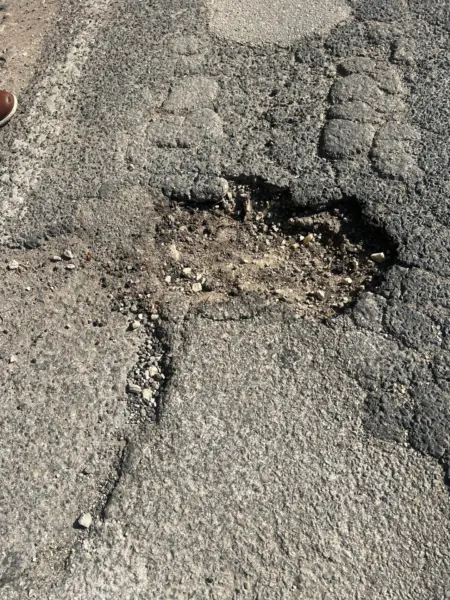Workability is key to the asphalt industry. In road construction and maintenance, incorporating new products brings both potential improvements and challenges. At the heart of these advancements is the critical aspect of preserving the “workability” that professionals in this field heavily rely on.
This article was first published November 1, 2023
As lower-carbon asphalt like Modern Hydrogen’s Modern Asphalt becomes more available, we expect to see more eco-friendly asphalt listed as a required facet of material for public works projects soon. Contractors that work with lower embodied CO2 products, in addition to being top performing and lower in cost, will be given more consideration and win more bids.
There is nationwide momentum towards more sustainable road construction methods. In For Construction Pros, Ken VanDomelen from Coast Pavement Services commented on President Biden’s Infrastructure Law calling for allocating billions to modernize highways, roads, and main streets. “Funding improvements to roads, bridges, railways, and other infrastructure has been a central piece of President Biden’s recovery plans. This is good for us in the asphalt industry and good for the nation,” said VanDomelen.
With the implementation of climate action plans and states’ emissions reduction targets, we should expect to see the same momentum down through county, town, and city roads.
Bridging the Technical Divide and Considering Workability
Integrating the materials enhanced with sequestered carbon into asphalt mix is done at the plant. Unlike other products like polymer modifiers or plastic additives, the introduction of Modern Asphalt products doesn’t demand any alteration in production temperatures. This avoids any upsurge in fuel requirements and emissions—an important blend of operational efficiency and environmental responsibility. (Interested in specific numbers? Write our team at carbon@modernhydrogen.com)

Process and workability changes must be considered when working with new products. In some wet processes, “recycled plastics are added into the asphalt binder as polymer modifier or asphalt replacement, which requires mechanical mixing and, in some cases, additional compatibilizers to achieve and maintain a homogeneous modified binder blend,” according to the National Center for Asphalt Technology at Auburn University.
The voyage from the plant to the paver is a testimony to the workability of Modern Asphalt. Preliminary findings suggest that the mix retains its temperature well in the haul truck, performing admirably at the paver and thereafter during the compaction process. These encouraging attributes reflect the overarching objective of ensuring that the paving crew can manage the mix conventionally, with no adverse impact on setting time or workability.
The Green Quotient: Embracing Sustainability
A key feature of Modern Asphalt is the carbon sequestration. The trapped solid carbon within the pavement stays put even when the pavement is broken down and recycled—a characteristic aligned with our industry’s strong recycling practices. Elemental carbon has a flash or ignition point far higher than any asphalt process. It won’t be oxidized from carbon into CO2 under normal asphalt processes and conditions.
Asphalt producers are also able to use less binder when incorporating Modern Asphalt into their manufacturing, which lowers the embodied CO2 of the pavement and lowers the overall cost of the projects.
Sid Perkins, a science writer for the Proceedings of the National Academy of Science (PNAS), accurately predicted the potential for a range of refinements that could make highways more sustainable with asphalt innovation. Perkins said, “the United States and many other nations keep building and replacing the same sorts of roads year after year, using the same basic design that’s been around for centuries. Despite humanity’s road-making rut, asphalt pavement upgrades are certainly possible…Modifications could include changing the aggregates and binders in the pavement or adding recycled materials into the mix.”
Collaborations and Extended Testing on Workability
To fortify the promise that low-carbon asphalt and asphalt with sequestered carbon holds, collaborations with DOTs, other agencies, and potential partners are instrumental. Extended testing and accelerated aging tests will further delineate the performance of the asphalt in a recycled state, addressing any speculative concerns and solidifying the product’s stature as a recyclable and inert substance in the foreseeable future.
Texas Initiatives: A Step Towards Tomorrow
One of the most populated counties in the country is preparing for the debut public road deployment of Modern Asphalt. Key players, like Road Recyclers, are on the ground, steering a seamless transition from the mixing and packaging phase to the actual road deployment. Detailed frameworks for this phase are being crafted to foster precise communication with customers, regulatory agencies, the media, and other stakeholders.
Modern Hydrogen’s Modern Asphalt is not just a minor step towards improved, lower-cost road infrastructure; it represents a significant leap toward a sustainable and workable future. As plans sharpen and engagement with various stakeholders expands, the path ahead looks promising. There’s ample opportunity for innovative collaborations, technological advancements, and a notable reduction in emissions. Through thorough planning and a steadfast commitment to sustainability, we’re not just making small changes, but actively paving the way for a greener tomorrow in the asphalt innovation landscape.
Want to get started on a demonstration project in your area? Write us at Carbon@ModernHydrogen.com

